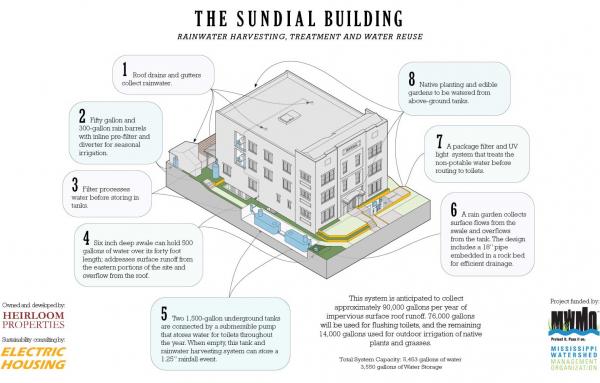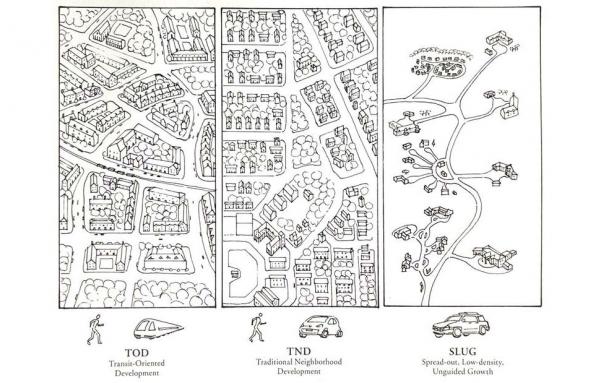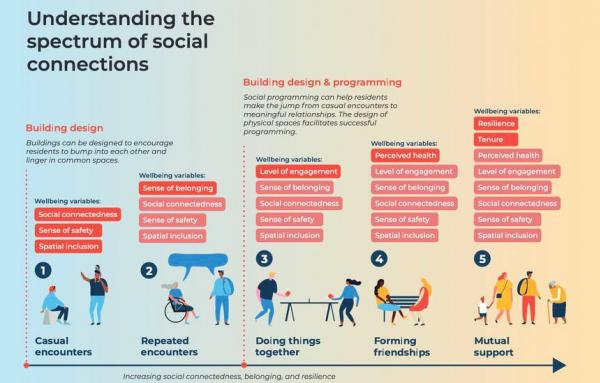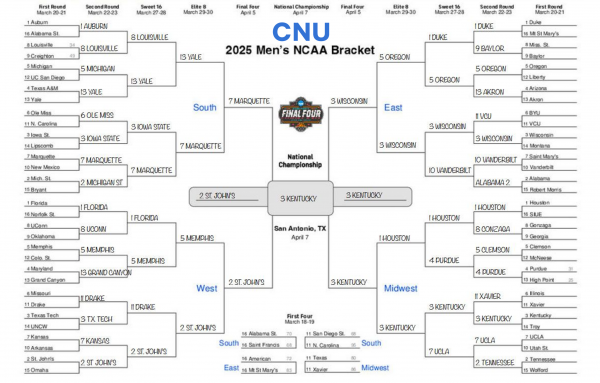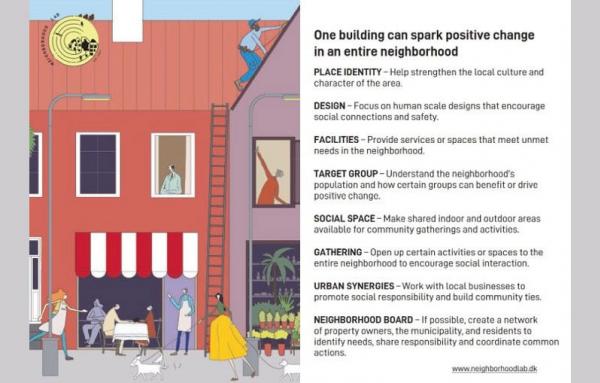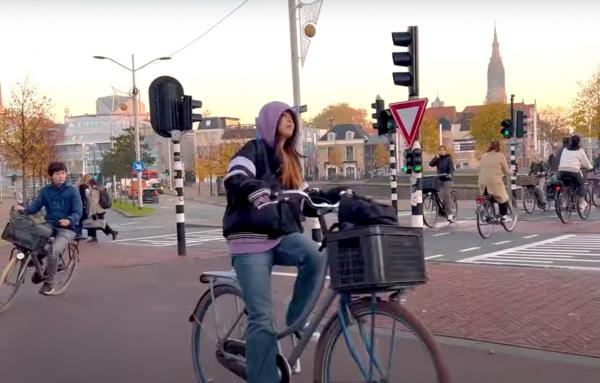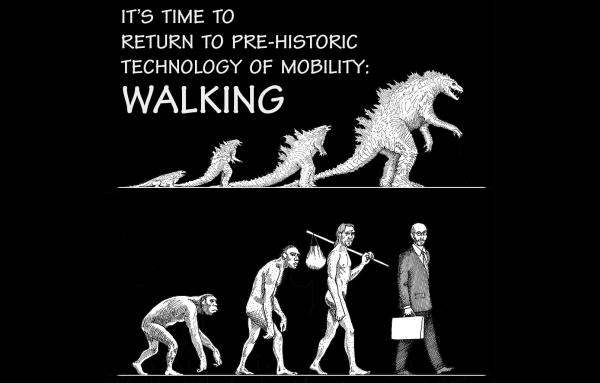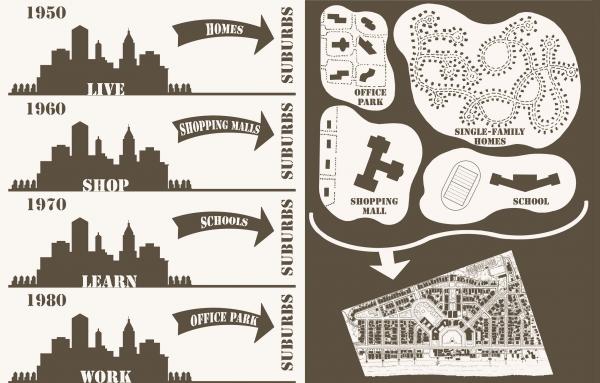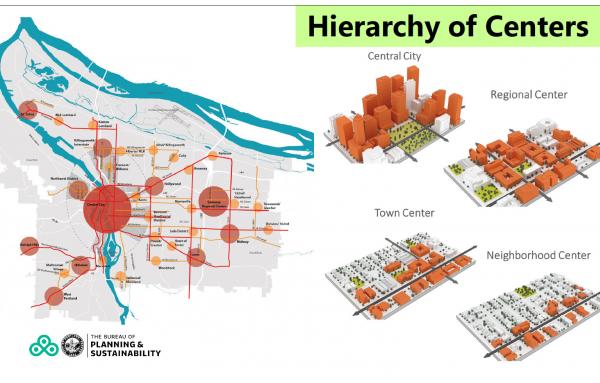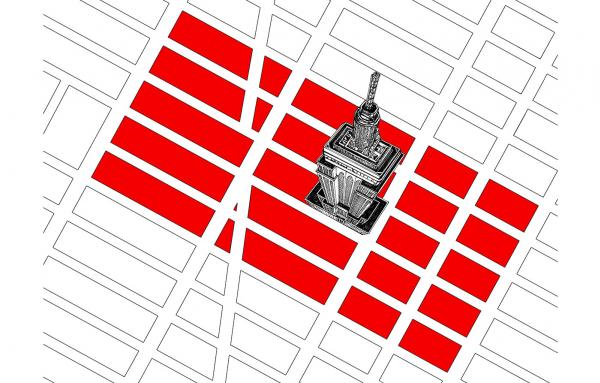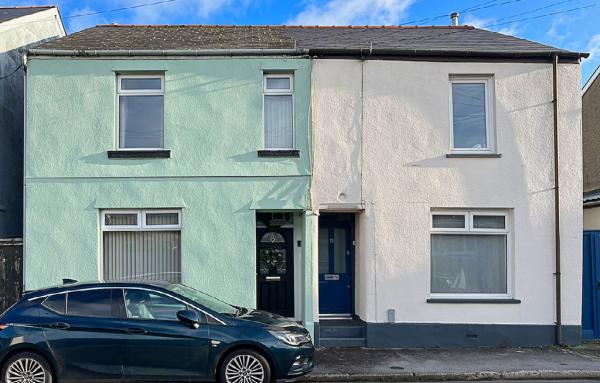Got A Minute
The Sundial Building is nearing completion in Minneapolis, and architect Marques King has posted images and some of its features on LinkedIn. The building features a cool rainwater collection system that recycles approximately 90,000 gallons of...
This image was recently posted on LinkedIn along with a discussion of the term SLUG, which stands for spread-out, low-density, unguided growth.
The social aspect of community development is important. It’s been said before, but we are, at heart, social creatures. When technology drives us apart, as it has in many ways over the last 100 years, we suffer.
Basketball fans across America have filled out their brackets using all kinds of analysis, but probably nobody else is using Walk Score to determine NCAA predictions. Here’s how the teams would fare.
There's been much discussion of creating what the late Ray Oldenburg called “third places,” why they are vanishing, and how they are linchpins of neighborhoods and social interaction. Neighborhood Lab, based in Copenhagen, created a graphic...
The Netherlands is one of the happiest places on Earth. This video by Active Towns founder John Simmerman gives a reason why.
On the last day of a visit, Simmerman recorded a typical morning commute in Delft, a historic city of just over...
The following features of walkable communities were presented this week by Wade Walker, a transportation engineer with Kittelson & Associates. This is a great list, although not definitive; other lists of 10 could be made. Here's Walker’s list,...
The drawing was inspired when I was channel surfing and stopped at a history channel that showed reptilian animals crawling and then walking.
For 5,000 years, we have been making cities that relied on human energy, animal power, and no...
In the early 1980s, a young architect, Dhiru Thadani, saw a lecture by another young architect, Andres Duany, who was designing a new town called Seaside with his wife and partner, Elizabeth Plater-Zyberk. Duany explained how the elements of cities...
I recently spoke on a panel discussing the 15-minute city, and the cool graphic above was presented showing a hierarchy of mixed-use centers throughout the City of Portland, Oregon. This kind of analysis would help many cities plan to achieve an...
Under typical office parking requirements of a conservative 3 spaces per 1,000 square feet of floor area, it would require 56 acres or 15 New York City blocks to serve the Empire State Building if the parking were provided in surface lots. Completed...
A beautifully illustrated article on the Placemakers website offers ideas on compact living, based on case studies of “missing middle” housing types in a village in Wales. Author Susan Henderson, an urban designer and coding expert who is based in...
